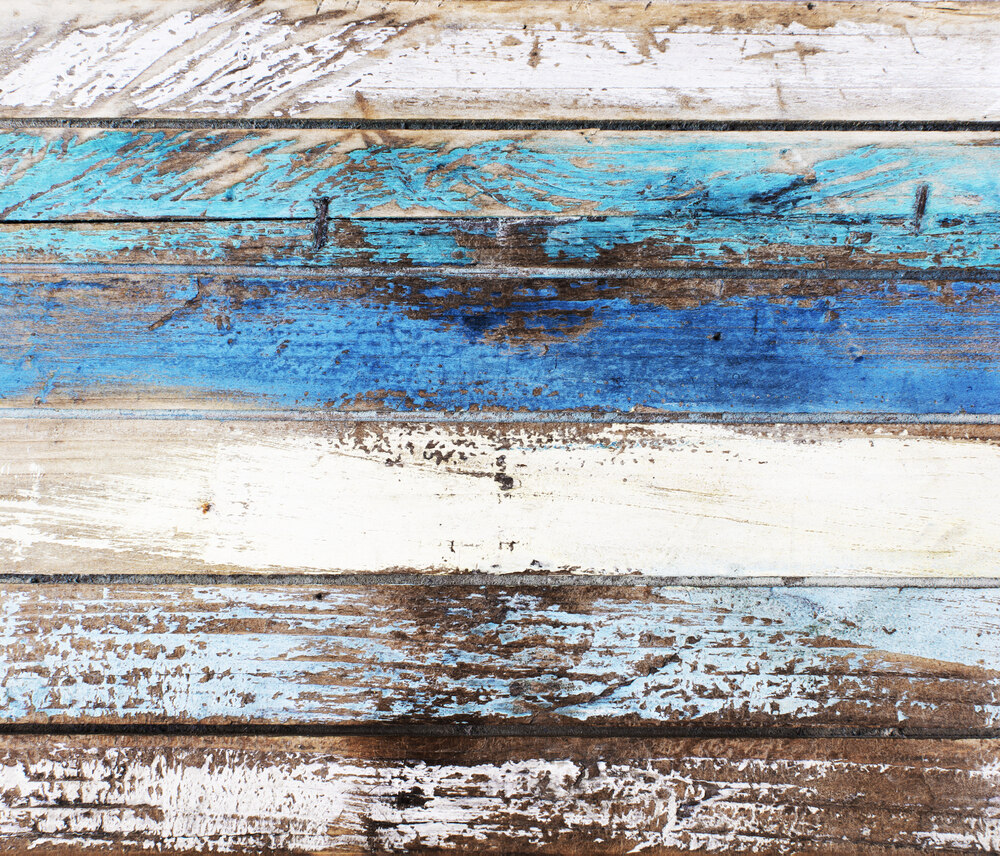Reclaimed wood flooring is more than a design choice: it’s a piece of history under your feet. Known for its warmth, character, and – of course – being super eco-friendly, reclaimed wood brings depth and personality that new timber simply can’t match. Whether you’re renovating a period home or adding rustic charm to a modern space, reclaimed flooring offers texture, authenticity and timeless appeal, as well as making a positive environmental impact.
Our experts at Funky Flooring have compiled a comprehensive guide to reclaimed wood floors below.
1. What Is Reclaimed Wood Flooring?
Reclaimed wood flooring is made from timber that’s been salvaged, restored, and repurposed from old buildings, barns, factories, and even ships.
This wood is cleaned, treated, and cut into floorboards ready for installation, preserving its natural weathering and unique markings. Unlike mass-produced timber, every plank has a story: from nail holes and saw marks to natural ageing and rich tones developed over decades.
Because of this individuality, reclaimed wood floors bring a level of depth and history that’s impossible to reproduce with new materials. Each board is one of a kind, turning your floor into a design feature in its own right.

2. Why Choose Reclaimed Wood Flooring?
Reclaimed wood is chosen for its sustainability, beauty, and longevity – offering both environmental and aesthetic benefits.
Sustainability:
By reusing existing materials, reclaimed wood dramatically reduces the need for logging and manufacturing. It’s a carbon-friendly choice, helping to lower your project’s environmental impact, while supporting upcycling. Many reclaimed sources come from hardwoods that are no longer harvested today, giving you access to rare species without harming forests.
Character & Authenticity:
Every scratch, knot and grain tells a story. This individuality gives reclaimed wood its distinctive charm, infusing warmth and authenticity into any room. Whether you’re designing a rustic kitchen or a sleek industrial apartment, reclaimed floors offer an instant lived-in feel that new planks simply can’t replicate.
Durability & Strength:
Older wood tends to be denser and harder than modern timber because it was originally cut from mature, slow-grown trees. That means reclaimed floors aren’t just beautiful, they’re built to last. With proper care, they can outlive most modern alternatives.
Design Versatility:
From classic countryside cottages to contemporary lofts, reclaimed wood adapts beautifully to any style. Its natural variation in tone and texture means it can either blend subtly into a neutral scheme or serve as the standout focal point in a modern design.
3. How Can You Style Reclaimed Wood Floors?
The key to styling reclaimed wood floors is balance – letting their natural beauty shine while complementing them with the right materials and colours.
Rustic Warmth:
Pair reclaimed wood with soft neutrals, woven textures, and natural fabrics like linen or wool for a timeless, farmhouse-inspired aesthetic.
Modern Contrast:
In contemporary homes, reclaimed planks provide the perfect contrast to sleek furniture and metallic finishes. Think matte black fixtures, exposed brick, and industrial lighting for a chic, urban look.
Feature Walls & Ceilings:
Don’t limit reclaimed wood to floors – the same materials can be used to create statement walls, ceilings, or stair treads for cohesive interior design.
Mixing Materials:
Combine reclaimed wood with polished concrete, glass, or natural stone to introduce both warmth and texture. The organic tones of reclaimed timber soften the harder edges of modern design beautifully.

4. How Do You Care for Reclaimed Wood Flooring?
Reclaimed wood floors are durable, but they still need regular maintenance to preserve their aesthetic and health.
The short answer: Keep them clean, nourished, and protected – avoid harsh chemicals and maintain their finish.
Detailed care tips:
- Sweep and mop regularly with a soft brush or microfibre mop to prevent grit from scratching the surface.
- Avoid excess water. Wood can warp if exposed to standing moisture – a damp mop is plenty.
- Use gentle, natural cleaning products. Harsh detergents can strip oils and finishes, dulling the patina.
- Re-oil or wax periodically. Depending on traffic levels, a light re-coating every few years keeps the wood supple and enhances its colour.
- Control humidity. Keep rooms well-ventilated to prevent boards expanding or shrinking.
With these steps, reclaimed wood will continue to age gracefully, deepening in tone and character over time.
5. What Should You Know Before Buying Reclaimed Wood Flooring?
Before investing in reclaimed wood flooring, it’s important to understand its origin, quality, and preparation process.
Authenticity:
Ask your supplier where the wood was sourced and how it’s been reclaimed. Genuine reclaimed wood should have documentation or provenance showing its history.
Treatment & Preparation:
Ensure the boards have been kiln-dried to remove moisture and eliminate any pests. Reputable suppliers will also plane and sand the wood for a smooth finish while preserving the original patina.
Installation Considerations:
Reclaimed wood may have slight variations in width or thickness, so it’s best installed by an experienced fitter familiar with natural, aged materials. This ensures a perfect fit and long-lasting performance.
Finishing Options:
Many reclaimed boards can be supplied pre-finished with oil or wax, or unfinished for on-site customisation. Choose the finish that best suits your interior — matte for a rustic look or satin for a more refined aesthetic.
6. Is Reclaimed Wood Flooring Worth the Investment?
Yes, reclaimed wood flooring offers long-term value through durability, sustainability, and timeless appeal.
While it may cost more upfront than mass-produced alternatives, reclaimed flooring can actually save money in the long run. Its strength means it won’t need replacing as often, and its enduring style ensures it never goes out of fashion.
For homeowners wanting an eco-conscious, design-led upgrade that adds warmth and authenticity, reclaimed wood is a flooring choice that truly stands the test of time.

